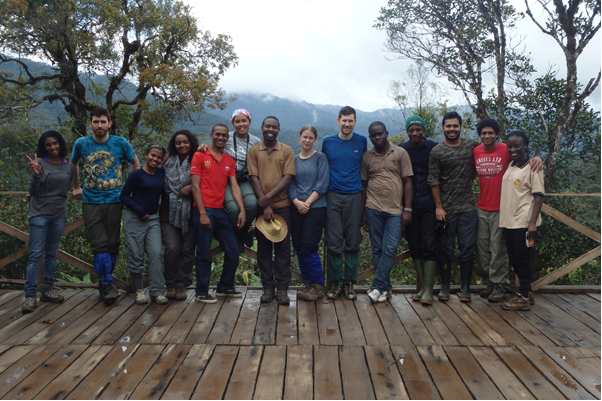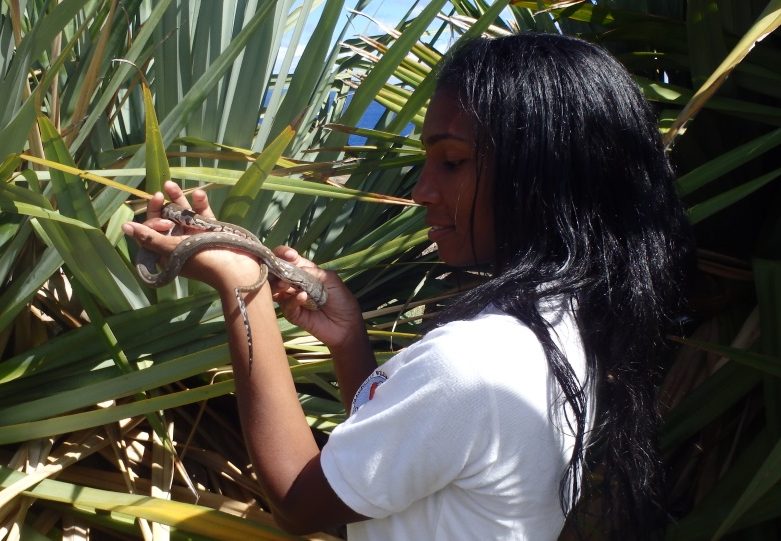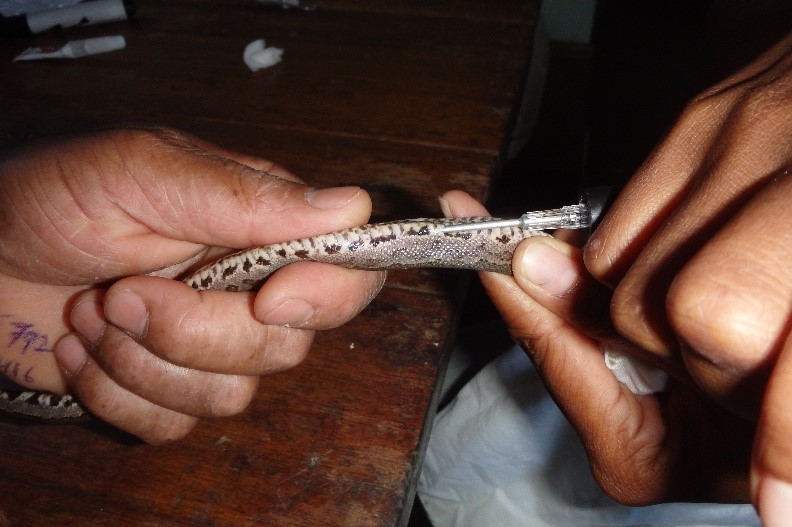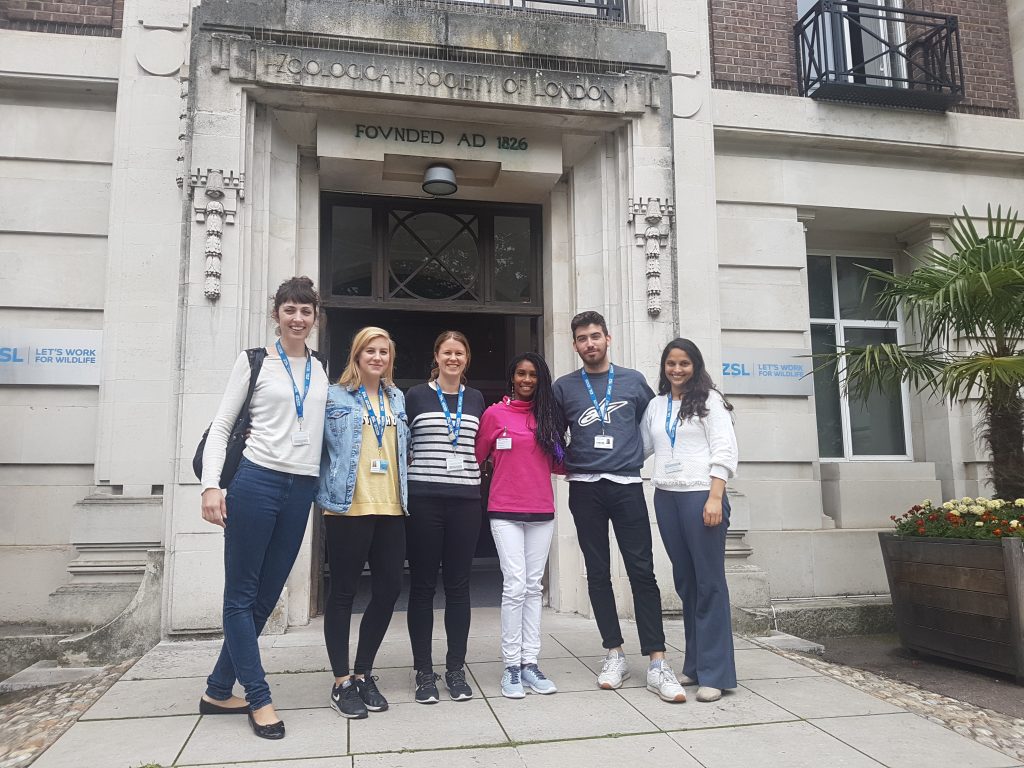Aurelie Hector is a Segrè EDGE reptile Fellow working to protect the Round Island boa in Round Island, Mauritius. Read more about her here.
Breathless, speechless…those were my reactions when I found out that I was selected to become a ZSL Segré EDGE Fellow in 2017. Me, who has never stepped out from my little island of Mauritius, was about to undertake an adventure into the unknown.
The first destination on my journey, you may ask? No less than Madagascar itself. A unique sanctuary packed with many species found nowhere else on earth, a paradise island for a conservation biologist like me who has always dreamed of visiting another biodiversity hot spot. Thanks to the EDGE of Existence, the conservation courses in Madagascar not only opened my eyes to a wealth of species diversity but it was also a great opportunity for capacity building and networking. I met amazing young EDGE fellows from all across Africa as well as one fellow from India, whom all shared the same dreams and vision of saving species for a better future, just like I do.
Through the course I also built my knowledge on how to collect appropriate data in an efficient way to answer questions related to my study. Where before I would see only numbers and graphs, now I can estimate abundance and survival, body condition and habitat preferences of my EDGE species, the Round Island keel-scaled boa, Casarea dussumieri.
Below is a sneak preview of the boa encounter rates per hour within the survey quadrats on Round Island that were examined between 2006 and 2017. Initial results show that there was a substantial increase in the number of boas found over the 11-year period, as a result of habitat restoration by the Mauritian Wildlife Foundation, National Parks and Conservation Service and Durrell Wildlife Conservation Trust (Figure 1).

Through my course I also realised that scientists cannot change the world without public support. As Cassandra (one of our EDGE tutors) would say, people are the cause of the state of the world today so we need people to bring it back from the EDGE. Therefore, I made it my mission to engage my own community about conservation issues using Round Island keel-scaled boa as an ambassador.
Reptiles are generally a challenging group of animals to make Mauritian people like and when talking about a snake it can be even worse. People tend to associate snakes with bad luck and danger and would only think to kill them without question. However, with the publication of my EDGE project work in two local newspapers, and my video interview with the Brut Nature Fr Facebook page, now people are starting to ask me questions about the Round Island keel-scaled boa via my Facebook and Twitter account which was not the case before. This indicates that people are now interested to know more about the snake which is quite encouraging for its conservation.
I got the chance to visit two schools already, where I raised awareness of our endangered endemic species of snake to the youngsters. It was delightful to see how the kids were excited and proud to discover the existence of this EDGE species and how its unique ability made it stand out from many different species of animals.
The children were mortified to found out that the Round Island boa was endangered, but this revelation has also heightened their interest and increased their will to protect nature. They even gave me examples of what they could do to protect the environment at their level. This gives me hope for the future, one positive conservation lesson at a young age can leave a lasting impression on children.
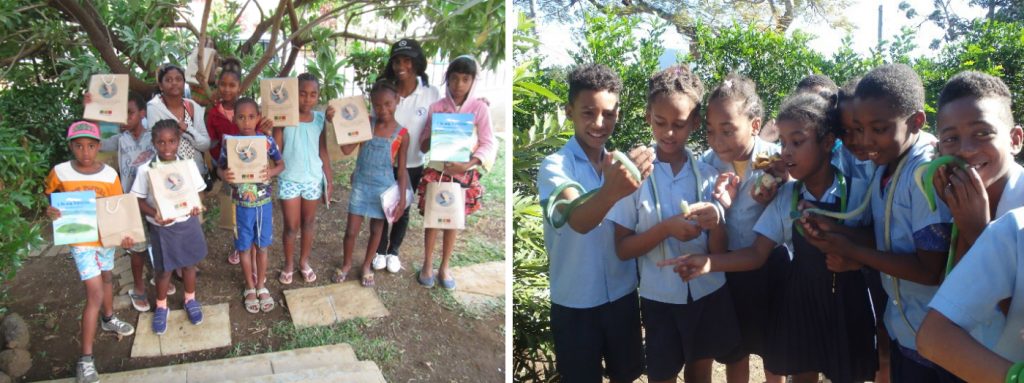
Another objective of my study is also to determine whether photo recognition software (WILD ID) could work in successfully recognising individual boas. This will allow us to move away from the invasive technique of PIT tagging. Taking photos of tail patterns is quicker than PIT-tagging and less stressful for the snake. With my visit to ZSL organised by the EDGE team, and thanks to their support, I was able to spend time using WILD ID with support during November 2017.
Thanks to the EDGE team also got the chance to learn on how to hold a Rhinoceros snake, which increased the list of snakes I have ever held and gave me experience with different snake handling techniques. The trip to England was breath-taking. Not only because it was too cold for me to breathe, coming from a hot tropical climate Island, but also seeing the EDGE team in action was inspiring.
Last but not least I felt privileged together with my fellow friend Emmanuel from Ghana, to be the first ever representatives of the reptile conservation community to become EDGE fellows. It is great to see that reptiles are starting to gain attention and recognitions from the public. After all, they are living evidence of an ancient past before humanity, and although present today, their future lies on the edge of our hands.
